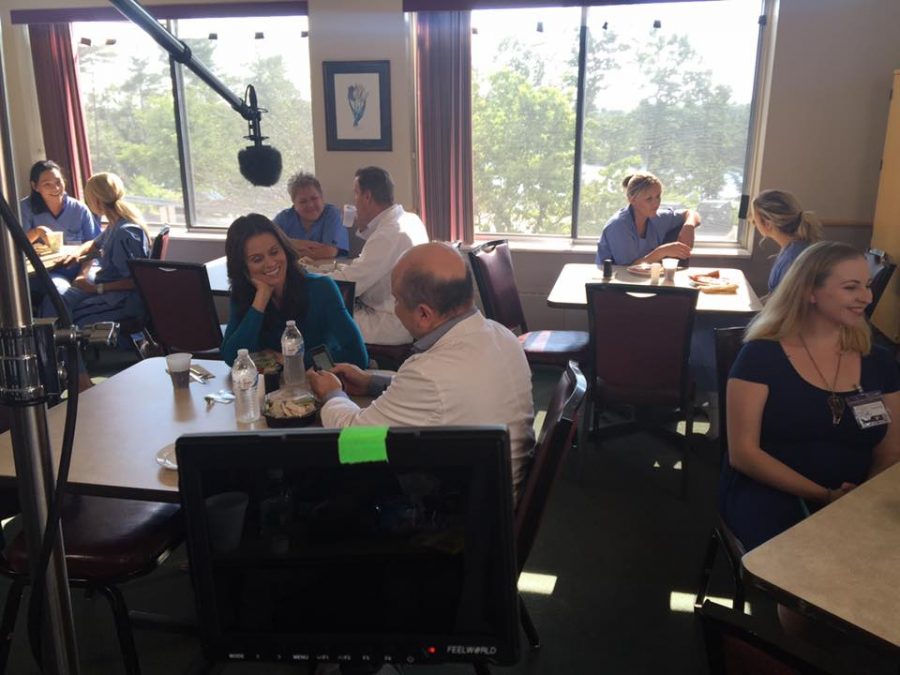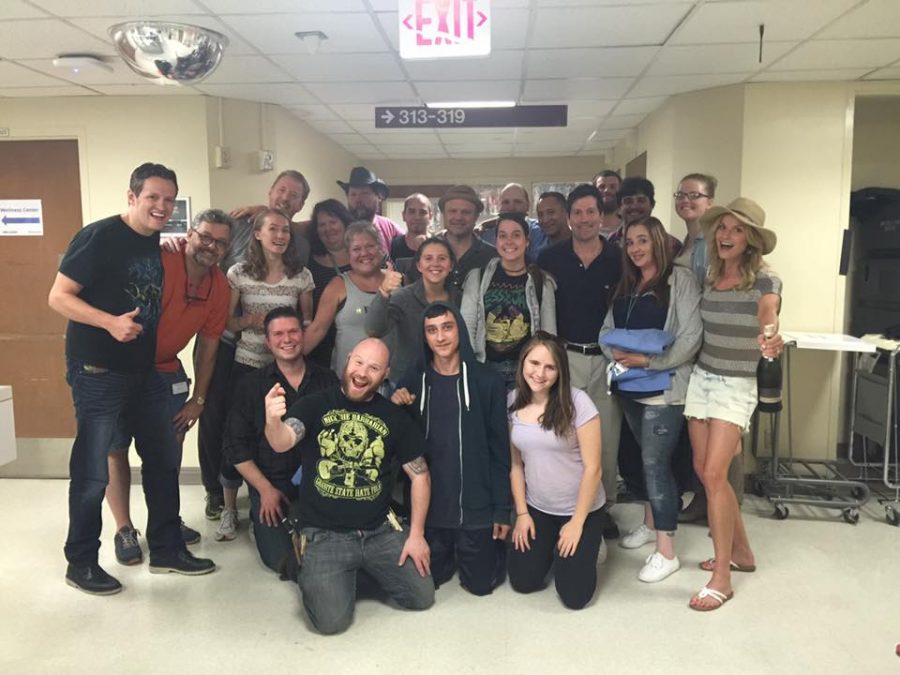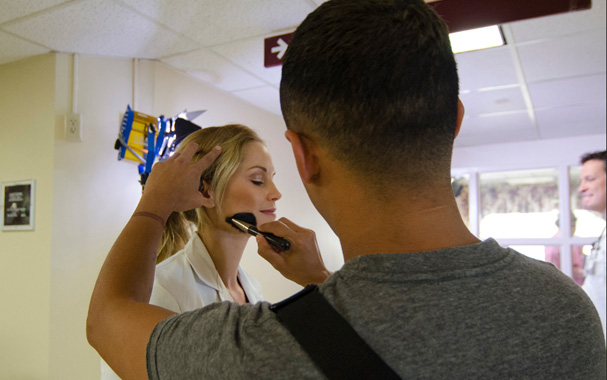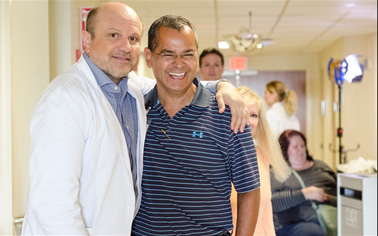WHEN DOES LIFE END?
At one time, the end of life was very clear. People died of an illness, injury, or just of old age, when their organs critical for functioning gave out, and usually they died at home with their family, relatives, and very close friends gathered around them. Then, they stopped breathing and their heart stopped, and within a few minutes, they lost consciousness and died.
But in the last few decades, the growing medical technologies that sustain a dying patient, except in the event of a serious accident or fatal illness that brings death quickly, raise the question – at what point is a patient really dead?
As an end-of-life care doctor, I am involved when patients have a terminal condition and are towards the end of the dying process. So my role is to help ease the way for these patients, and in some cases for their families, to make some end of life choices about their care. That typically involves encouraging them to sign a DNR/DNI – do not resuscitate/do not intubate order – which means that the medical team, usually at the hospital, will not attempt to revive them, once they have suffered from a cardiac arrest or ceased breathing to avoid exposing them to unnecessarily pain and trauma at the end. Instead, the goal is to not provide any treatment, only pain relief, at the end to ease their passing.
Usually that death after the heart or breathing stops occurs within a few minutes, although there have been some rare cases of patients somehow healing and going on to live a few more years. But I am not always present at the actual moment of a patient’s actual death, though I commonly deal with comforting the patient’s after the fact, just as I help in caring for the patient in the hours, days, and weeks leading up to his or her death.
 Thus, as I have seen in my own practice, the question of when death comes can be uncertain in light of the new medical technologies for prolonging life, and this determination of death has many practical implications for a family and society as a whole. For example, once a person is declared officially dead and a death certificate is issued, there are legal implications for distributing the person’s personal property and business holdings, based on whether there is a will or not. Also, there may be certain practices based on the patient’s or family’s religion and culture for recognizing that person’s death and past life and for determining what to do with the patient’s body, from various burial practices to cremation. Then, too, certain policies may govern organ donation, assuming the patient or family making the decision has agreed to this, once the person is biologically dead, although perhaps not clinically dead, since the person’s heart may be kept pumping and breathing may continue to function by artificial means. This can be the case, because the medical standard for determining death is based on brain death, which is different from a person being in a vegetative coma, where there is still some low-level brain activity.
Thus, as I have seen in my own practice, the question of when death comes can be uncertain in light of the new medical technologies for prolonging life, and this determination of death has many practical implications for a family and society as a whole. For example, once a person is declared officially dead and a death certificate is issued, there are legal implications for distributing the person’s personal property and business holdings, based on whether there is a will or not. Also, there may be certain practices based on the patient’s or family’s religion and culture for recognizing that person’s death and past life and for determining what to do with the patient’s body, from various burial practices to cremation. Then, too, certain policies may govern organ donation, assuming the patient or family making the decision has agreed to this, once the person is biologically dead, although perhaps not clinically dead, since the person’s heart may be kept pumping and breathing may continue to function by artificial means. This can be the case, because the medical standard for determining death is based on brain death, which is different from a person being in a vegetative coma, where there is still some low-level brain activity.
But in a brain death, all brain functioning has ceased, so there is “total brain failure,” as Dr. Alan Rubenstein, a senior consultant to the President’s Council on Bioethics back in 2009 wrote in an article “What and When Is Death?” published in The New Atlantis in that year. In such a case, even though the person’s heart can be kept beating and a ventilator can keep that person breathing, he is essentially a “heart-beating cadaver.” This is because all consciousness, everything that makes a person a person, is gone. As Rubenstein describes it, a patient with total brain failure is “in an eyes-closed coma twenty-four hours a day. He shows no sensitivity to pain and, on examination by a neurologist, exhibits no reflex responses that would indicate even the simplest brain function. He makes no effort whatsoever to breathe on his own. If the ventilator were removed, his cells and tissues would, in a very short time, shut down. In stillness, the body as a whole would come to look like a familiar corpse.”
Legally, this brain-dead state is considered death – a legal definition that has been established for decades. In fact, all 50 states adhere to the guidelines which are endorsed by the American Medical Association and American Bar Association. They agree that brain death is death, even if the heart and breathing functions continue – a definition that has certainly proved useful in providing organs for the living. For example, according to Rubenstein, in 2007, over 28,000 organs were taken from about 8000 deceased donors, and about 90{36b4843c1e91ee13efbe8c3a798c5619926a11e7f2c1b4172ed6d3c5e5f1165f} of them were pronounced dead and their organs removed before the ventilator was removed and their heart stopped beating.
 Such brain death can occur for a number of reasons – trauma to the brain, such as due to a severe head injury, a stroke or aneurysm, a brain tumor, or a lack of blood flow or oxygen to the brain, such as due to drowning or a heart attack. Whatever the reason, this is the way the person is considered to have died. By contrast, someone in a coma or persistent vegetative state still has some brain stem function which controls breathing and possibly some other brain function, so he or she isn’t dead – and could still experience healing. But brain death is irreversible. The person is considered dead, and this is the time that doctors indicate on the patient’s death certificate. Though the person may be on mechanical support, such a breathing machine, that keeps oxygen going to the organs until they can be recovered to be transplanted into another patient, the patient is not being kept alive. He or she is considered medically dead.
Such brain death can occur for a number of reasons – trauma to the brain, such as due to a severe head injury, a stroke or aneurysm, a brain tumor, or a lack of blood flow or oxygen to the brain, such as due to drowning or a heart attack. Whatever the reason, this is the way the person is considered to have died. By contrast, someone in a coma or persistent vegetative state still has some brain stem function which controls breathing and possibly some other brain function, so he or she isn’t dead – and could still experience healing. But brain death is irreversible. The person is considered dead, and this is the time that doctors indicate on the patient’s death certificate. Though the person may be on mechanical support, such a breathing machine, that keeps oxygen going to the organs until they can be recovered to be transplanted into another patient, the patient is not being kept alive. He or she is considered medically dead.
But are all of these patients considered brain dead actually dead? And should brain death be the standard for determining death? That standard is now being challenged today.
One challenge is from families who are caught in the middle between the legal definitions and their personal beliefs, including their religious convictions. For example, the family of Jahi McMath in California has sought to reverse her death certificate, after she was declared brain dead in January 2014. Though the hospital wanted to disconnect her from ventilators, her mother, a devout Christian, believed Jahi was still alive, begged the hospital not to disconnect her, and eventually got Jahi released to her care. Since then, her mother has noticed what she thinks are signs that Jahi is responding to words with bodily movements, and she has petitioned the California courts to reverse the brain dead determination. In turn, should Jahi still be deemed to be alive that will increase the insurance payments for her medical care.
In a Texas case, Marlise Munoz was found unconscious at her home in November 2013, possibly due to a blood clot, and she was rushed to the hospital. Though she had previous conversations with her husband, telling him that she did not want to remain connected to machines, she was pregnant. As a result, the hospital, guided by Texas law, refused to take her off life support, since the law prohibits withdrawing or withholding life-sustaining treatment from a pregnant patient, no matter what she wishes. After the husband sued in January 2014, a judge finally ordered her to be removed from the machines and allowed to die, and the 23 week old fetus was not delivered.
These cases raise all kinds of questions about when a patient is dead and what laws should prevail when a patient is brain dead, but their body can still be kept alive. Then there is the question of whether a person who is seemingly brain dead might still be revived, as a result of some near death experience cases. As described by Michael Inbar in “New Study, What Really Happens When You Die” in Today magazine on September 28, 2009, Dr. Sam Parnia of Weill Cornell Medical Center, author of What Happens When We Die and leader of the AWARE (Awareness During Resuscitation) study, found that some people who were resuscitated after nearly dying reported having a near death experience. Though their brains had gone into a flatline state, so presumably they shouldn’t be conscious, the doctors were able to get blood back into their brains. When they became conscious again, about 10 to 20{36b4843c1e91ee13efbe8c3a798c5619926a11e7f2c1b4172ed6d3c5e5f1165f} of them reported that they had some consciousness present. For example, some reported seeing the doctors and nurses working on them, as if they were looking on from above. Some reported seeing lights and singing, as if they had gone to heaven.
In another study, reported in the Telegraph by Sarah Knapton on October 7, 2014, scientists at the University of Southampton spent four years examining more than 2000 people who suffered cardiac arrests at 15 hospitals in the UK, United States, and Austria. They found that nearly 40{36b4843c1e91ee13efbe8c3a798c5619926a11e7f2c1b4172ed6d3c5e5f1165f} of these people who survived – 330 out of 2060 patients — described some kind of awareness when they were deemed clinically dead before their hearts were restarted. Most notably they saw the medical staff working on reviving them. Others recalled seeing a bright light, such as the sun shining, being dragged through the water, or being separated from their bodies.
Such cases raise questions about what is death? And as medical technology improves, can the dying process be extended or even reversed?
At this point, I don’t know, though these cases and research raise some issues for thought, and they could result in legal changes over how we define death. These cases could also affect what I and other end-of-life care doctors do in treating terminal patients and their families in their last months of life.
Dr. Sebastian Sepulveda has had nearly 30 years’ experience as a doctor and professor of medicine, working with patients in a community hospital and personally caring for them, many times as the sole provider of end-of-life care. Since 2005, he has been in private practice, dealing with private outpatients and with inpatients in hospitals, especially with those who have what appears to be a terminal condition. His book At Death’s Door and Death’s Door TV series pilot based on his work will be released in 2017. His website is at www.atdeathsdoor.com.





